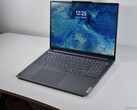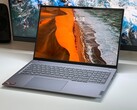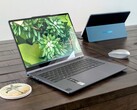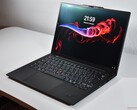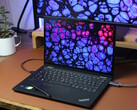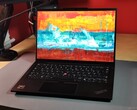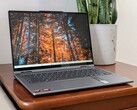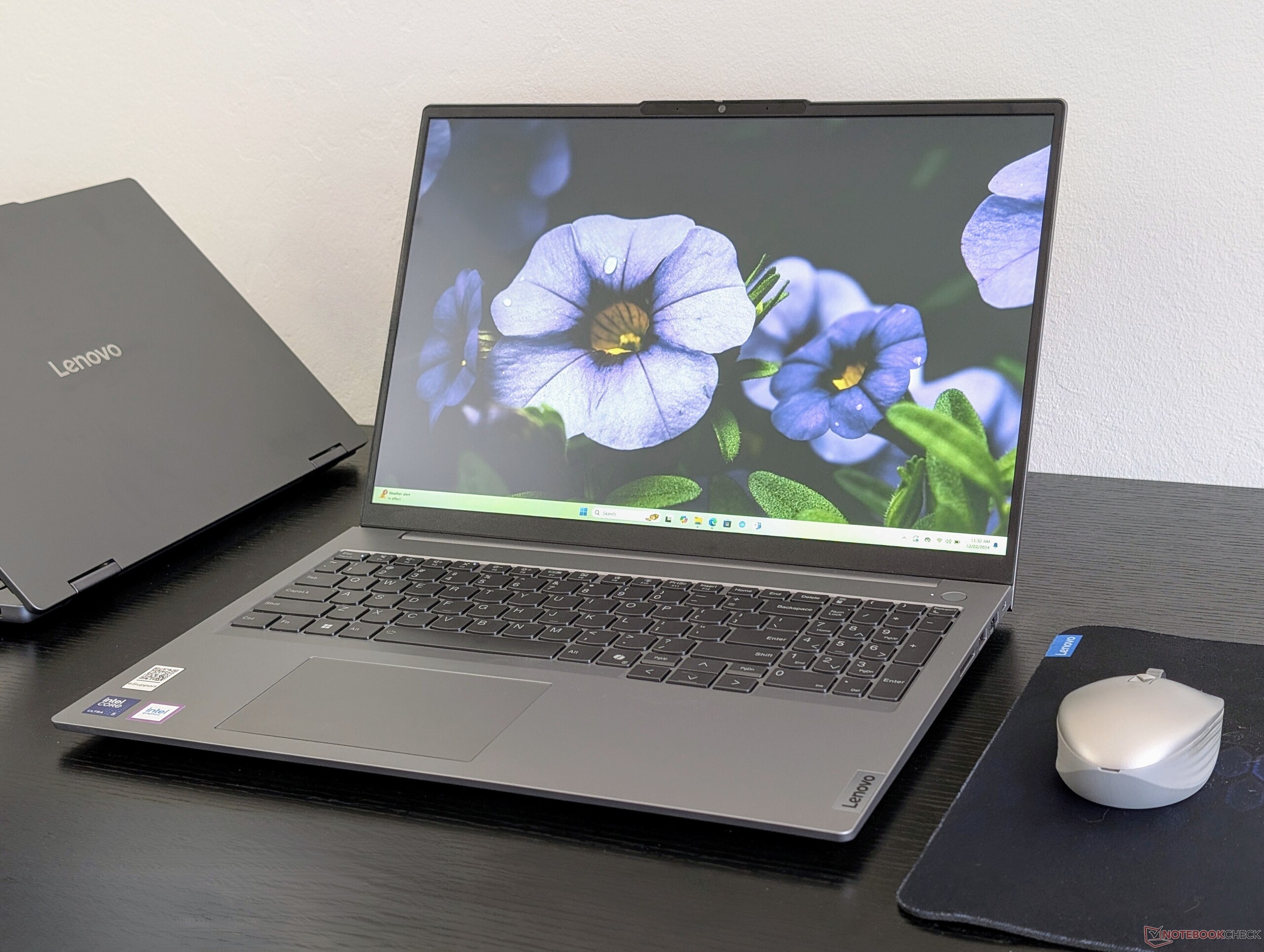
Lenovo ThinkBook 16 G7 IML laptop review: Affordable yet professional
For the budget-conscious home office.
If you don't need all the fancy and expensive features of a traditional ThinkPad, then the ThinkBook 16 G7 can save you a ton of cash especially for SMB applications. Its efficient Core Ultra 5 CPU is a highlight while the base 1200p panel could use an upgrade.Allen Ngo 👁 Published 🇫🇷 🇪🇸 ...
Verdict — Optimized For Basic Office Needs
The ThinkBook 16 G7 doesn't do anything particularly exciting, but that's ok because prices can be kept low as a result. It's a quiet machine with all the office basics including an integrated numpad, privacy shutter, wide variety of ports, Kensington lock, easy serviceability, and modern CPUs options from both Intel and AMD. It's also sleek and lightweight enough for the occasional travel without looking too gaudy or conspicuous in professional environments. For most users, these features are likely sufficient for their day-to-day demands.
As a budget laptop, however, the model still suffers from the usual culprits including limited color coverage and weak graphics performance especially at the base configuration level. Upgrading to the 1600p display may therefore be worthwhile, but users who require even wider P3 colors will have to look elsewhere such as the pricier ThinkPad or XPS series. One particular aspect we think could be improved without impacting the price of the system is the keyboard as key feedback is too shallow and soft for a model designed for office tasks and word processing. Other budget alternatives like the Asus VivoBook series or even the HP Pavilion Plus series do better in this regard.
Pros
Cons
Price and Availability
Amazon is now shipping the ThinkBook 16 G7 touchscreen version for $788 USD. Alternatively, users can purchase directly from Lenovo with starting prices of $750.
Potential Competitors in Comparison
Image | Model / Review | Price | Weight | Height | Display |
|---|---|---|---|---|---|
| Lenovo ThinkBook 16 G7 IML Intel Core Ultra 5 125U ⎘ Intel Graphics 4-Core iGPU (Arrow Lake) ⎘ 16 GB Memory, 512 GB SSD | Amazon: $833.83 List Price: 750 USD | 1.8 kg | 17.5 mm | 16.00" 1920x1200 142 PPI IPS | |
| Lenovo ThinkBook 16 G6 ABP AMD Ryzen 5 7530U ⎘ AMD Radeon RX Vega 7 ⎘ 16 GB Memory, 512 GB SSD | Amazon: 1. $99.89 Replacement for Lenovo Think... 2. $59.00 WODBAO Laptop Enclosure Cove... 3. $629.95 Lenovo ThinkBook 16 Business... List Price: 749€ | 1.8 kg | 17.5 mm | 16.00" 1920x1200 142 PPI IPS | |
| MSI Summit A16 AI Plus A3HMTG AMD Ryzen AI 9 365 ⎘ AMD Radeon 880M ⎘ 32 GB Memory, 1024 GB SSD | Amazon: $1,299.00 List Price: 1600 USD | 2.1 kg | 16.85 mm | 16.00" 2560x1600 189 PPI IPS | |
| Asus Vivobook S16 S5606M Intel Core Ultra 7 155H ⎘ Intel Arc 8-Core iGPU ⎘ 16 GB Memory, 1024 GB SSD | Amazon: 1. $1,149.99 ASUS Vivobook S16 Laptop, Co... 2. $987.00 ASUS Vivobook S16 Laptop, Co... 3. $1,229.00 ASUS Vivobook S16 Copilot+ A... | 1.6 kg | 16 mm | 16.00" 3200x2000 236 PPI OLED | |
| HP Envy x360 2-in-1 16-ad0097nr AMD Ryzen 7 8840HS ⎘ AMD Radeon 780M ⎘ 16 GB Memory, 1024 GB SSD | Amazon: 1. $6.95 Keyboard Cover for HP Envy 2... 2. $49.91 Original New for HP Envy x36... 3. $24.95 mCover Case ONLY Compatible ... List Price: 1300 USD | 1.8 kg | 18.3 mm | 16.00" 2880x1800 212 PPI OLED | |
| Dell Inspiron 16 Plus 7640 Intel Core Ultra 7 155H ⎘ NVIDIA GeForce RTX 4060 Laptop GPU ⎘ 16 GB Memory, 1024 GB SSD | Amazon: $1,629.99 List Price: 1300 USD | 2.2 kg | 19.9 mm | 16.00" 2560x1600 189 PPI IPS |
The ThinkBook 16 G7 directly replaces the ThinkBook 16 G6 by swapping out the Alder Lake and Zen 3 U-series processors for faster Meteor Lake and Zen 3 HS-series options. The two models are otherwise visually identical.
Our test unit is a lower-end configuration with the Core Ultra 5 125U and 1200p IPS display for approximately $750 USD. Higher-end Intel options include the Core Ultra 7 155H with faster integrated Arc 8 graphics and a higher resolution 1600p 120 Hz display.
Alternatives to the ThinkBook 16 G7 include other budget-oriented office or multimedia laptops like the HP Pavilion 16, Asus Vivobook S16, or Dell Inspiron 16.
More Lenovo reviews:
Specifications
Case — Fit For The Office
Our comments about the ThinkBook 16 G6 apply here for the ThinkBook 16 G7 as the chassis remains unchanged. The two-tone aluminum lid design aligns with other ThinkBook models to contrast the darker and more professional ThinkPad models. The base, however, utilizes more plastic for a cheaper feel once you actually open the otherwise attractive lid.
Size and weight are average for the 16-inch form factor. Nonetheless, more versatile 16-inch convertibles are available at nearly the same size and weight such as the HP Envy x360 2-in-1 16.
Connectivity
Ports remain the same except that our G7 model supports Thunderbolt 4 devices unlike on last year's AMD-powered G6 model. We appreciate that there are multiple USB-A, USB-C, and video-out ports to make accessories easier to connect when in the office.
SD Card Reader
SD card reader performance remains at ~90 MB/s. Moving 1 GB of photos from our UHS-II test card to desktop takes about 13 seconds to be faster than many other inexpensive laptops like the Asus Vivobook S16 which can be over 2x or 3x slower.
Note that the SD card protrudes by over half its length when inserted unlike on most other laptops. It's therefore recommended to remove the card to avoid damaging it during transport.
| SD Card Reader | |
| average JPG Copy Test (av. of 3 runs) | |
| MSI Summit A16 AI Plus A3HMTG (AV Pro SD microSD 128 GB V60) | |
| Lenovo ThinkBook 16 G7 IML (Toshiba Exceria Pro SDXC 64 GB UHS-II) | |
| Lenovo ThinkBook 16 G6 ABP (Angelbird AV Pro V60) | |
| Asus Vivobook S16 S5606M | |
| Dell Inspiron 16 Plus 7640 (Angelbird AV Pro V60) | |
| maximum AS SSD Seq Read Test (1GB) | |
| MSI Summit A16 AI Plus A3HMTG (AV Pro SD microSD 128 GB V60) | |
| Lenovo ThinkBook 16 G7 IML (Toshiba Exceria Pro SDXC 64 GB UHS-II) | |
| Lenovo ThinkBook 16 G6 ABP (Angelbird AV Pro V60) | |
| Dell Inspiron 16 Plus 7640 (Angelbird AV Pro V60) | |
| Asus Vivobook S16 S5606M | |
Communication
Webcam
Camera quality hasn't changed at up to 2 MP or 1080p30 video. The privacvy shutter comes standard while IR is optional to save on costs.
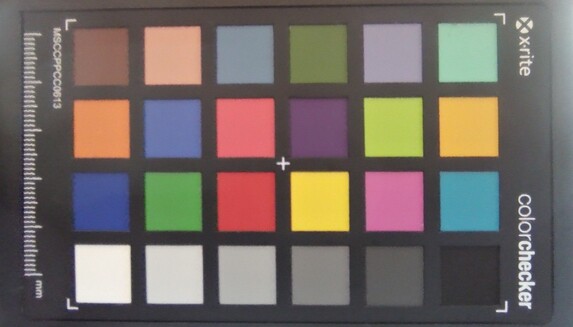
Maintenance
Sustainability
Lenovo claims 25%, 50%, 30%, and 90% PCC recycled plastic for manufacturing the battery pack enclosure, key caps, speakers, and USB-C AC adapter, respectively. The packaging is FSC certified albeit with plastic wrapping for the laptop and cables.
Accessories And Warranty
There are no extras in the box other than the AC adapter and paperwork. The usual one-year limited manufacturer warranty applies if purchased in the US.
Input Devices
Keyboard And Touchpad
Our comments about the keyboard and clickpad on the ThinkBook 16 G6 apply here for the G7 model. The typing experience is unfortunately closer to the IdeaPad series than it is to the superior ThinkPad series meaning that travel and feedback are shallower and weaker, respectively. Similarly, clicking on the clickpad feels unsatisfying due to the spongy feedback.
Display — 1200p Option Is Unimpressive
Three display options are available as follows. Our test unit comes with the bolded option.
- 1920 x 1200, IPS, 60 Hz, 60% sRGB, 300 nits, Non-touch
- 1920 x 1200, IPS, 60 Hz, 60% sRGB, 300 nits, Touchscreen
- 2560 x 1600, IPS, 120 Hz, 100% sRGB, 350 nits, Non-touch
The 1200p option appears to be the same as the one that shipped with the ThinkBook 16 G6. Although black-white response times are decent, the narrow color coverage and native 60 Hz refresh rate represent a budget panel. We recommend upgrading to the 1600p option whenever possible for a noticeably more colorful and sharper viewing experience especially if you intend on editing photos or videos.
| |||||||||||||||||||||||||
Brightness Distribution: 92 %
Center on Battery: 321.2 cd/m²
Contrast: 868:1 (Black: 0.37 cd/m²)
ΔE ColorChecker Calman: 8.7 | ∀{0.5-29.43 Ø4.78}
calibrated: 1.82
ΔE Greyscale Calman: 9.2 | ∀{0.09-98 Ø5}
43% AdobeRGB 1998 (Argyll 3D)
61.2% sRGB (Argyll 3D)
41.6% Display P3 (Argyll 3D)
Gamma: 2.83
CCT: 6200 K
| Lenovo ThinkBook 16 G7 IML LEN160WUXGA, IPS, 1920x1200, 16", 60 Hz | Lenovo ThinkBook 16 G6 ABP LEN160WUXGA, IPS, 1920x1200, 16", 60 Hz | MSI Summit A16 AI Plus A3HMTG AU Optronics B16QAN02.N, IPS, 2560x1600, 16", 165 Hz | HP Envy x360 2-in-1 16-ad0097nr Samsung SDC41A6, OLED, 2880x1800, 16", 120 Hz | Dell Inspiron 16 Plus 7640 AU Optronics B160QAN, IPS, 2560x1600, 16", 120 Hz | Asus VivoBook Pro 16 K6602VU Samsung ATNA60BX01-1, OLED, 3200x2000, 16", 120 Hz | |
|---|---|---|---|---|---|---|
| Display | -2% | 98% | 109% | 75% | 108% | |
| Display P3 Coverage (%) | 41.6 | 40.4 -3% | 96.8 133% | 99.6 139% | 76 83% | 98.7 137% |
| sRGB Coverage (%) | 61.2 | 59.8 -2% | 99.8 63% | 100 63% | 99.8 63% | 99.7 63% |
| AdobeRGB 1998 Coverage (%) | 43 | 42 -2% | 84.7 97% | 96.5 124% | 76.7 78% | 96.5 124% |
| Response Times | -62% | 38% | 96% | -23% | 58% | |
| Response Time Grey 50% / Grey 80% * (ms) | 18.4 ? | 32.8 ? -78% | 12.9 ? 30% | 0.8 ? 96% | 25.6 ? -39% | 0.68 ? 96% |
| Response Time Black / White * (ms) | 16.5 ? | 23.9 ? -45% | 8.9 ? 46% | 0.89 ? 95% | 17.6 ? -7% | 13.2 ? 20% |
| PWM Frequency (Hz) | 491.8 ? | 240 ? | ||||
| Screen | -5% | 44% | 44% | 37% | 26% | |
| Brightness middle (cd/m²) | 321.2 | 310 -3% | 475.4 48% | 399.4 24% | 314.7 -2% | 353 10% |
| Brightness (cd/m²) | 319 | 290 -9% | 440 38% | 405 27% | 291 -9% | 354 11% |
| Brightness Distribution (%) | 92 | 86 -7% | 89 -3% | 98 7% | 89 -3% | 98 7% |
| Black Level * (cd/m²) | 0.37 | 0.22 41% | 0.36 3% | 0.28 24% | ||
| Contrast (:1) | 868 | 1409 62% | 1321 52% | 1124 29% | ||
| Colorchecker dE 2000 * | 8.7 | 6.2 29% | 2.99 66% | 4.05 53% | 1.62 81% | 4.23 51% |
| Colorchecker dE 2000 max. * | 19.85 | 24.7 -24% | 7.64 62% | 6.69 66% | 2.94 85% | 7.13 64% |
| Colorchecker dE 2000 calibrated * | 1.82 | 5.3 -191% | 0.74 59% | 1.02 44% | 1.08 41% | 2.42 -33% |
| Greyscale dE 2000 * | 9.2 | 3.8 59% | 2.9 68% | 1.1 88% | 1.3 86% | 2.5 73% |
| Gamma | 2.83 78% | 2.22 99% | 2.31 95% | 2.27 97% | 2.26 97% | 2.4 92% |
| CCT | 6200 105% | 6011 108% | 6472 100% | 6419 101% | 6385 102% | 6642 98% |
| Total Average (Program / Settings) | -23% /
-12% | 60% /
54% | 83% /
69% | 30% /
36% | 64% /
52% |
* ... smaller is better
The 1200p panel does not come pre-calibrated. Color temperature is too cool out of the box and average DeltaE values are quite high as well. Calibrating the display ourselves with an X-Rite colorimeter would improve average grayscale and color deltaE values from 9.2 and 8.7 to just 0.8 and 1.82, respectively. However, colors still become increasing inaccurate at higher saturation levels due to the limited gamut as noted in the previous section. Our calibrated ICM profile is available to download above for free.
Display Response Times
| ↔ Response Time Black to White | ||
|---|---|---|
| 16.5 ms ... rise ↗ and fall ↘ combined | ↗ 8.5 ms rise | |
| ↘ 8 ms fall | ||
| The screen shows good response rates in our tests, but may be too slow for competitive gamers. In comparison, all tested devices range from 0.1 (minimum) to 240 (maximum) ms. » 37 % of all devices are better. This means that the measured response time is better than the average of all tested devices (20.2 ms). | ||
| ↔ Response Time 50% Grey to 80% Grey | ||
| 18.4 ms ... rise ↗ and fall ↘ combined | ↗ 10 ms rise | |
| ↘ 8.4 ms fall | ||
| The screen shows good response rates in our tests, but may be too slow for competitive gamers. In comparison, all tested devices range from 0.165 (minimum) to 636 (maximum) ms. » 31 % of all devices are better. This means that the measured response time is better than the average of all tested devices (31.6 ms). | ||
Screen Flickering / PWM (Pulse-Width Modulation)
| Screen flickering / PWM not detected | |||
In comparison: 53 % of all tested devices do not use PWM to dim the display. If PWM was detected, an average of 8108 (minimum: 5 - maximum: 343500) Hz was measured. | |||
Outdoor visibility is average for the budget category. The 300-nit maximum brightness is typical for the price range compared to the more expensive ThinkPad T16 G2 which can be 50 percent brighter.
Performance — Core U For Just The Basics
Testing Conditions
We set both Windows and Vantage to Performance mode prior to running the benchmarks below. Annoyingly, the power modes on Vantage do not sync with the power modes on Windows and so it's possible to set conflicting modes like Vantage to Power Saver and Windows to Performance. Keep in mind that the Vantage power profiles override the Windows settings. Owners should become familiar with the pre-installed Vantage software as it is the hub for adjusting Lenovo-specific features and BIOS updates.
Processor
The Core Ultra 5 125U supplants the last generation Core i5-1335U, but users expecting it to run faster may be disappointed as performance is nearly the same between them. In fact, the older Core i5-1335U in the Lenovo ThinkPad E16 G1 can even be faster by up to 10 percent in single-threaded loads. To make up for this deficit, the Core Ultra 5 12U integrates an NPU to accelerate AI applications, but the first generation Intel NPU is infamously not compatible with Co-Pilot+.
Clock rate sustainability is good with only minor dips in performance over time when running CineBench R15 xT in a loop. Users demanding faster processors can consider upgrading to the Core Ultra 7 155U or Core Ultra 7 155H configuration for 10 percent and 30 percent faster performance, respectively.
Cinebench R15 Multi Loop
Cinebench R23: Multi Core | Single Core
Cinebench R20: CPU (Multi Core) | CPU (Single Core)
Cinebench R15: CPU Multi 64Bit | CPU Single 64Bit
Blender: v2.79 BMW27 CPU
7-Zip 18.03: 7z b 4 | 7z b 4 -mmt1
Geekbench 6.5: Multi-Core | Single-Core
Geekbench 5.5: Multi-Core | Single-Core
HWBOT x265 Benchmark v2.2: 4k Preset
LibreOffice : 20 Documents To PDF
R Benchmark 2.5: Overall mean
Cinebench R23: Multi Core | Single Core
Cinebench R20: CPU (Multi Core) | CPU (Single Core)
Cinebench R15: CPU Multi 64Bit | CPU Single 64Bit
Blender: v2.79 BMW27 CPU
7-Zip 18.03: 7z b 4 | 7z b 4 -mmt1
Geekbench 6.5: Multi-Core | Single-Core
Geekbench 5.5: Multi-Core | Single-Core
HWBOT x265 Benchmark v2.2: 4k Preset
LibreOffice : 20 Documents To PDF
R Benchmark 2.5: Overall mean
* ... smaller is better
AIDA64: FP32 Ray-Trace | FPU Julia | CPU SHA3 | CPU Queen | FPU SinJulia | FPU Mandel | CPU AES | CPU ZLib | FP64 Ray-Trace | CPU PhotoWorxx
| Performance rating | |
| MSI Summit A16 AI Plus A3HMTG | |
| HP Envy x360 2-in-1 16-ad0097nr | |
| Asus Vivobook S16 S5606M | |
| Dell Inspiron 16 Plus 7640 | |
| Lenovo ThinkBook 16 G6 ABP | |
| Average Intel Core Ultra 5 125U | |
| Lenovo ThinkBook 16 G7 IML | |
| AIDA64 / FP32 Ray-Trace | |
| MSI Summit A16 AI Plus A3HMTG | |
| HP Envy x360 2-in-1 16-ad0097nr | |
| Asus Vivobook S16 S5606M | |
| Dell Inspiron 16 Plus 7640 | |
| Lenovo ThinkBook 16 G6 ABP | |
| Lenovo ThinkBook 16 G7 IML | |
| Average Intel Core Ultra 5 125U (5784 - 9282, n=8) | |
| AIDA64 / FPU Julia | |
| MSI Summit A16 AI Plus A3HMTG | |
| HP Envy x360 2-in-1 16-ad0097nr | |
| Asus Vivobook S16 S5606M | |
| Dell Inspiron 16 Plus 7640 | |
| Lenovo ThinkBook 16 G6 ABP | |
| Lenovo ThinkBook 16 G7 IML | |
| Average Intel Core Ultra 5 125U (29578 - 47366, n=8) | |
| AIDA64 / CPU SHA3 | |
| MSI Summit A16 AI Plus A3HMTG | |
| HP Envy x360 2-in-1 16-ad0097nr | |
| Asus Vivobook S16 S5606M | |
| Dell Inspiron 16 Plus 7640 | |
| Lenovo ThinkBook 16 G7 IML | |
| Average Intel Core Ultra 5 125U (1565 - 2669, n=8) | |
| Lenovo ThinkBook 16 G6 ABP | |
| AIDA64 / CPU Queen | |
| HP Envy x360 2-in-1 16-ad0097nr | |
| MSI Summit A16 AI Plus A3HMTG | |
| Dell Inspiron 16 Plus 7640 | |
| Asus Vivobook S16 S5606M | |
| Lenovo ThinkBook 16 G6 ABP | |
| Lenovo ThinkBook 16 G7 IML | |
| Average Intel Core Ultra 5 125U (44976 - 47868, n=8) | |
| AIDA64 / FPU SinJulia | |
| MSI Summit A16 AI Plus A3HMTG | |
| HP Envy x360 2-in-1 16-ad0097nr | |
| Dell Inspiron 16 Plus 7640 | |
| Asus Vivobook S16 S5606M | |
| Lenovo ThinkBook 16 G6 ABP | |
| Lenovo ThinkBook 16 G7 IML | |
| Average Intel Core Ultra 5 125U (4390 - 5507, n=8) | |
| AIDA64 / FPU Mandel | |
| MSI Summit A16 AI Plus A3HMTG | |
| HP Envy x360 2-in-1 16-ad0097nr | |
| Asus Vivobook S16 S5606M | |
| Lenovo ThinkBook 16 G6 ABP | |
| Dell Inspiron 16 Plus 7640 | |
| Lenovo ThinkBook 16 G7 IML | |
| Average Intel Core Ultra 5 125U (14563 - 24922, n=8) | |
| AIDA64 / CPU AES | |
| Asus Vivobook S16 S5606M | |
| HP Envy x360 2-in-1 16-ad0097nr | |
| MSI Summit A16 AI Plus A3HMTG | |
| Dell Inspiron 16 Plus 7640 | |
| Lenovo ThinkBook 16 G7 IML | |
| Average Intel Core Ultra 5 125U (33640 - 48114, n=8) | |
| Lenovo ThinkBook 16 G6 ABP | |
| AIDA64 / CPU ZLib | |
| MSI Summit A16 AI Plus A3HMTG | |
| Dell Inspiron 16 Plus 7640 | |
| Asus Vivobook S16 S5606M | |
| HP Envy x360 2-in-1 16-ad0097nr | |
| Lenovo ThinkBook 16 G7 IML | |
| Average Intel Core Ultra 5 125U (457 - 779, n=8) | |
| Lenovo ThinkBook 16 G6 ABP | |
| AIDA64 / FP64 Ray-Trace | |
| MSI Summit A16 AI Plus A3HMTG | |
| HP Envy x360 2-in-1 16-ad0097nr | |
| Asus Vivobook S16 S5606M | |
| Dell Inspiron 16 Plus 7640 | |
| Lenovo ThinkBook 16 G6 ABP | |
| Lenovo ThinkBook 16 G7 IML | |
| Average Intel Core Ultra 5 125U (2904 - 4846, n=8) | |
| AIDA64 / CPU PhotoWorxx | |
| MSI Summit A16 AI Plus A3HMTG | |
| Asus Vivobook S16 S5606M | |
| Average Intel Core Ultra 5 125U (24082 - 47875, n=8) | |
| Dell Inspiron 16 Plus 7640 | |
| HP Envy x360 2-in-1 16-ad0097nr | |
| Lenovo ThinkBook 16 G7 IML | |
| Lenovo ThinkBook 16 G6 ABP | |
System Performance
PCMark results are slightly lower than the competition as the Core Ultra 5 125U isn't much faster than most older midrange U-series CPUs as noted above. Additionally, AIDA64 memory performance is slow due to our 16 GB of single-channel RAM. Owners can thankfully add a second stick of memory for dual-channel performance if desired.
CrossMark: Overall | Productivity | Creativity | Responsiveness
WebXPRT 3: Overall
WebXPRT 4: Overall
Mozilla Kraken 1.1: Total
| PCMark 10 / Score | |
| MSI Summit A16 AI Plus A3HMTG | |
| Dell Inspiron 16 Plus 7640 | |
| HP Envy x360 2-in-1 16-ad0097nr | |
| Asus Vivobook S16 S5606M | |
| Lenovo ThinkBook 16 G6 ABP | |
| Average Intel Core Ultra 5 125U, Intel Graphics 4-Core iGPU (Arrow Lake) (5639 - 6052, n=8) | |
| Lenovo ThinkBook 16 G7 IML | |
| PCMark 10 / Essentials | |
| MSI Summit A16 AI Plus A3HMTG | |
| Lenovo ThinkBook 16 G6 ABP | |
| HP Envy x360 2-in-1 16-ad0097nr | |
| Average Intel Core Ultra 5 125U, Intel Graphics 4-Core iGPU (Arrow Lake) (9582 - 10827, n=8) | |
| Dell Inspiron 16 Plus 7640 | |
| Lenovo ThinkBook 16 G7 IML | |
| Asus Vivobook S16 S5606M | |
| PCMark 10 / Productivity | |
| HP Envy x360 2-in-1 16-ad0097nr | |
| MSI Summit A16 AI Plus A3HMTG | |
| Asus Vivobook S16 S5606M | |
| Lenovo ThinkBook 16 G6 ABP | |
| Dell Inspiron 16 Plus 7640 | |
| Average Intel Core Ultra 5 125U, Intel Graphics 4-Core iGPU (Arrow Lake) (7548 - 8306, n=8) | |
| Lenovo ThinkBook 16 G7 IML | |
| PCMark 10 / Digital Content Creation | |
| Dell Inspiron 16 Plus 7640 | |
| MSI Summit A16 AI Plus A3HMTG | |
| HP Envy x360 2-in-1 16-ad0097nr | |
| Asus Vivobook S16 S5606M | |
| Average Intel Core Ultra 5 125U, Intel Graphics 4-Core iGPU (Arrow Lake) (6367 - 7087, n=8) | |
| Lenovo ThinkBook 16 G7 IML | |
| Lenovo ThinkBook 16 G6 ABP | |
| CrossMark / Overall | |
| MSI Summit A16 AI Plus A3HMTG | |
| Dell Inspiron 16 Plus 7640 | |
| HP Envy x360 2-in-1 16-ad0097nr | |
| Asus Vivobook S16 S5606M | |
| Average Intel Core Ultra 5 125U, Intel Graphics 4-Core iGPU (Arrow Lake) (1363 - 1648, n=8) | |
| Lenovo ThinkBook 16 G7 IML | |
| Lenovo ThinkBook 16 G6 ABP | |
| CrossMark / Productivity | |
| HP Envy x360 2-in-1 16-ad0097nr | |
| MSI Summit A16 AI Plus A3HMTG | |
| Dell Inspiron 16 Plus 7640 | |
| Asus Vivobook S16 S5606M | |
| Average Intel Core Ultra 5 125U, Intel Graphics 4-Core iGPU (Arrow Lake) (1310 - 1416, n=8) | |
| Lenovo ThinkBook 16 G6 ABP | |
| Lenovo ThinkBook 16 G7 IML | |
| CrossMark / Creativity | |
| MSI Summit A16 AI Plus A3HMTG | |
| Dell Inspiron 16 Plus 7640 | |
| HP Envy x360 2-in-1 16-ad0097nr | |
| Asus Vivobook S16 S5606M | |
| Average Intel Core Ultra 5 125U, Intel Graphics 4-Core iGPU (Arrow Lake) (1433 - 1550, n=8) | |
| Lenovo ThinkBook 16 G7 IML | |
| Lenovo ThinkBook 16 G6 ABP | |
| CrossMark / Responsiveness | |
| MSI Summit A16 AI Plus A3HMTG | |
| HP Envy x360 2-in-1 16-ad0097nr | |
| Dell Inspiron 16 Plus 7640 | |
| Asus Vivobook S16 S5606M | |
| Average Intel Core Ultra 5 125U, Intel Graphics 4-Core iGPU (Arrow Lake) (1066 - 1378, n=8) | |
| Lenovo ThinkBook 16 G7 IML | |
| Lenovo ThinkBook 16 G6 ABP | |
| WebXPRT 3 / Overall | |
| MSI Summit A16 AI Plus A3HMTG | |
| HP Envy x360 2-in-1 16-ad0097nr | |
| Dell Inspiron 16 Plus 7640 | |
| Asus Vivobook S16 S5606M | |
| Lenovo ThinkBook 16 G6 ABP | |
| Lenovo ThinkBook 16 G7 IML | |
| Average Intel Core Ultra 5 125U, Intel Graphics 4-Core iGPU (Arrow Lake) (237 - 253, n=8) | |
| WebXPRT 4 / Overall | |
| MSI Summit A16 AI Plus A3HMTG | |
| Dell Inspiron 16 Plus 7640 | |
| HP Envy x360 2-in-1 16-ad0097nr | |
| Lenovo ThinkBook 16 G7 IML | |
| Average Intel Core Ultra 5 125U, Intel Graphics 4-Core iGPU (Arrow Lake) (224 - 231, n=8) | |
| Lenovo ThinkBook 16 G6 ABP | |
| Mozilla Kraken 1.1 / Total | |
| Lenovo ThinkBook 16 G6 ABP | |
| Average Intel Core Ultra 5 125U, Intel Graphics 4-Core iGPU (Arrow Lake) (579 - 594, n=8) | |
| Lenovo ThinkBook 16 G7 IML | |
| HP Envy x360 2-in-1 16-ad0097nr | |
| Asus Vivobook S16 S5606M | |
| Dell Inspiron 16 Plus 7640 | |
| MSI Summit A16 AI Plus A3HMTG | |
* ... smaller is better
| PCMark 10 Score | 5761 points | |
Help | ||
| AIDA64 / Memory Copy | |
| Asus Vivobook S16 S5606M | |
| MSI Summit A16 AI Plus A3HMTG | |
| HP Envy x360 2-in-1 16-ad0097nr | |
| Average Intel Core Ultra 5 125U (35467 - 82786, n=8) | |
| Dell Inspiron 16 Plus 7640 | |
| Lenovo ThinkBook 16 G7 IML | |
| Lenovo ThinkBook 16 G6 ABP | |
| AIDA64 / Memory Read | |
| MSI Summit A16 AI Plus A3HMTG | |
| Asus Vivobook S16 S5606M | |
| Dell Inspiron 16 Plus 7640 | |
| Average Intel Core Ultra 5 125U (38849 - 63159, n=8) | |
| HP Envy x360 2-in-1 16-ad0097nr | |
| Lenovo ThinkBook 16 G7 IML | |
| Lenovo ThinkBook 16 G6 ABP | |
| AIDA64 / Memory Write | |
| MSI Summit A16 AI Plus A3HMTG | |
| HP Envy x360 2-in-1 16-ad0097nr | |
| Asus Vivobook S16 S5606M | |
| Dell Inspiron 16 Plus 7640 | |
| Average Intel Core Ultra 5 125U (36830 - 63484, n=8) | |
| Lenovo ThinkBook 16 G7 IML | |
| Lenovo ThinkBook 16 G6 ABP | |
| AIDA64 / Memory Latency | |
| Average Intel Core Ultra 5 125U (125.5 - 153.2, n=8) | |
| Asus Vivobook S16 S5606M | |
| Lenovo ThinkBook 16 G7 IML | |
| HP Envy x360 2-in-1 16-ad0097nr | |
| MSI Summit A16 AI Plus A3HMTG | |
| Dell Inspiron 16 Plus 7640 | |
| Lenovo ThinkBook 16 G6 ABP | |
* ... smaller is better
DPC Latency
| DPC Latencies / LatencyMon - interrupt to process latency (max), Web, Youtube, Prime95 | |
| MSI Summit A16 AI Plus A3HMTG | |
| Asus VivoBook Pro 16 K6602VU | |
| HP Envy x360 2-in-1 16-ad0097nr | |
| Lenovo ThinkBook 16 G7 IML | |
| Lenovo ThinkBook 16 G6 ABP | |
| Dell Inspiron 16 Plus 7640 | |
* ... smaller is better
Storage Devices
Our test unit ships with the same SK Hynix HFS512GEJ4X112N PCIe4 x4 NVMe SSD as found on the smaller ThinkBook 14 2-in-1 G4. It even exhibits the same throttling behavior as shown by the graph below to suggest that its 5000 MB/s maximum transfer rate is unsustainable when stressed. The drive could have likely benefited from a heat spreader as a result.
| Drive Performance rating - Percent | |
| Lenovo ThinkBook 16 G6 ABP | |
| Asus Vivobook S16 S5606M -11! | |
| MSI Summit A16 AI Plus A3HMTG | |
| Dell Inspiron 16 Plus 7640 | |
| Lenovo ThinkBook 16 G7 IML | |
| HP Envy x360 2-in-1 16-ad0097nr | |
* ... smaller is better
Disk Throttling: DiskSpd Read Loop, Queue Depth 8
GPU Performance
The integrated Arc 4 is comparable to the Iris Xe 96 EUs on most older Core i7 laptops and so users will not see significant boosts in performance if upgrading to our Core Ultra 5 125U configuration. In fact, even the Core Ultra 7 155U configuration is only expected to bring a meager 15 to 20 percent boost in graphics. For a more noticeable upgrade, performance hunters or casual gamers will want to consider the Core Ultra 155H configuration instead which comes with the Arc 8 for 2x the performance.
Running on battery power will not impact performance. A Fire Strike test on batteries would return essentially the same scores as a test on mains.
| 3DMark 11 Performance | 6497 points | |
| 3DMark Cloud Gate Standard Score | 20983 points | |
| 3DMark Fire Strike Score | 3951 points | |
| 3DMark Time Spy Score | 1841 points | |
Help | ||
* ... smaller is better
Gaming Performance
Unless if you mainly play undemanding games like DOTA 2 or LoL, the Arc 4 is not powerful enough to play the latest titles at respectable frame rates even if set to the lowest settings. However, upgrading to the Arc 8 will give just enough power to play most titles at low 1080p settings and 30 FPS.
Cyberpunk 2077 ultra FPS Chart
| low | med. | high | ultra | |
|---|---|---|---|---|
| GTA V (2015) | 104.8 | 88.8 | 20.7 | 8.01 |
| Dota 2 Reborn (2015) | 90.8 | 55.5 | 50.2 | 47 |
| Final Fantasy XV Benchmark (2018) | 33.7 | 19.5 | 14.4 | |
| X-Plane 11.11 (2018) | 39.2 | 30.4 | 25.1 | |
| Far Cry 5 (2018) | 40 | 21 | 20 | 18 |
| Strange Brigade (2018) | 72.8 | 32.3 | 26.5 | 22.8 |
| Tiny Tina's Wonderlands (2022) | 26.4 | 20.4 | 13.7 | 11.2 |
| F1 22 (2022) | 39.2 | 36.8 | 27.6 | |
| Baldur's Gate 3 (2023) | 15.1 | 12.4 | 10.5 | 10.2 |
| Cyberpunk 2077 (2023) | 18.8 | 15.1 | 12.4 | 11.1 |
Emissions
System Noise
The low fan noise is one of the highlights of the system. It remains nearly silent when idling on desktop and even when running medium loads for a period of time like the first 90-second benchmark scene of 3DMark 06. Fan noise would hover just over 32 dB(A) when set to Performance mode and with 100 percent CPU utilization which is still almost inaudible in a typical office environment.
Noise level
| Idle |
| 23.1 / 23.1 / 23.1 dB(A) |
| Load |
| 23.2 / 32.6 dB(A) |
 | ||
30 dB silent 40 dB(A) audible 50 dB(A) loud |
||
min: | ||
| Lenovo ThinkBook 16 G7 IML Graphics 4-Core iGPU (Arrow Lake), Ultra 5 125U, SK hynix HFS512GEJ4X112N | Lenovo ThinkBook 16 G6 ABP Vega 7, R5 7530U, SK hynix HFS512GEJ9X125N | MSI Summit A16 AI Plus A3HMTG Radeon 880M, Ryzen AI 9 365, Samsung PM9C1 MZVL81T0HELB-00BTW | HP Envy x360 2-in-1 16-ad0097nr Radeon 780M, R7 8840HS, KIOXIA BG5 KBG50ZNV1T02 | Dell Inspiron 16 Plus 7640 GeForce RTX 4060 Laptop GPU, Ultra 7 155H, SK hynix BC901 HFS001TEJ4X164N | Asus VivoBook Pro 16 K6602VU GeForce RTX 4050 Laptop GPU, i9-13900H, Micron 2400 MTFDKBA1T0QFM | |
|---|---|---|---|---|---|---|
| Noise | -13% | -34% | -6% | -17% | -34% | |
| off / environment * (dB) | 23.1 | 24.3 -5% | 23.8 -3% | 22.9 1% | 23.8 -3% | 20.96 9% |
| Idle Minimum * (dB) | 23.1 | 24.3 -5% | 25 -8% | 23 -0% | 24.2 -5% | 25.28 -9% |
| Idle Average * (dB) | 23.1 | 24.3 -5% | 25 -8% | 23 -0% | 24.2 -5% | 25.28 -9% |
| Idle Maximum * (dB) | 23.1 | 24.3 -5% | 29.5 -28% | 23 -0% | 24.2 -5% | 25.28 -9% |
| Load Average * (dB) | 23.2 | 29.7 -28% | 37.5 -62% | 23.8 -3% | 28.9 -25% | 51.88 -124% |
| Cyberpunk 2077 ultra * (dB) | 29.2 | 46.5 -59% | ||||
| Load Maximum * (dB) | 32.6 | 41.4 -27% | 56.1 -72% | 43.8 -34% | 51 -56% | 51.8 -59% |
| Witcher 3 ultra * (dB) | 32.1 | 43.8 | 51 | 49 |
* ... smaller is better
Temperature
The left half of the system runs warmer than the right half due to the positioning of the cooling solution. However, the hot spot on the keyboard deck (C side) is much cooler than the hot spot on the bottom cover (D side) where the difference can be as large as 8 C when running demanding loads. Palms and fingers never become uncomfortably warm when working on the ThinkBook as a result.
In comparison, hot spots on last year's ThinkBook 16 G6 with the older and less efficient Ryzen 5 7530U would reach much warmer temperatures of up to 50 C.
(+) The maximum temperature on the upper side is 33.2 °C / 92 F, compared to the average of 34.3 °C / 94 F, ranging from 21.2 to 62.5 °C for the class Office.
(±) The bottom heats up to a maximum of 41.2 °C / 106 F, compared to the average of 36.8 °C / 98 F
(+) In idle usage, the average temperature for the upper side is 21.3 °C / 70 F, compared to the device average of 29.5 °C / 85 F.
(+) The palmrests and touchpad are cooler than skin temperature with a maximum of 21.8 °C / 71.2 F and are therefore cool to the touch.
(+) The average temperature of the palmrest area of similar devices was 27.6 °C / 81.7 F (+5.8 °C / 10.5 F).
| Lenovo ThinkBook 16 G7 IML Intel Core Ultra 5 125U, Intel Graphics 4-Core iGPU (Arrow Lake) | Lenovo ThinkBook 16 G6 ABP AMD Ryzen 5 7530U, AMD Radeon RX Vega 7 | MSI Summit A16 AI Plus A3HMTG AMD Ryzen AI 9 365, AMD Radeon 880M | HP Envy x360 2-in-1 16-ad0097nr AMD Ryzen 7 8840HS, AMD Radeon 780M | Dell Inspiron 16 Plus 7640 Intel Core Ultra 7 155H, NVIDIA GeForce RTX 4060 Laptop GPU | Asus VivoBook Pro 16 K6602VU Intel Core i9-13900H, NVIDIA GeForce RTX 4050 Laptop GPU | |
|---|---|---|---|---|---|---|
| Heat | -26% | -26% | -17% | -24% | -41% | |
| Maximum Upper Side * (°C) | 33.2 | 40.8 -23% | 52.8 -59% | 42.6 -28% | 43.4 -31% | 42.6 -28% |
| Maximum Bottom * (°C) | 41.2 | 50.5 -23% | 42 -2% | 47.8 -16% | 41.6 -1% | 48.4 -17% |
| Idle Upper Side * (°C) | 23.4 | 29.3 -25% | 30.6 -31% | 27.4 -17% | 32.8 -40% | 39.4 -68% |
| Idle Bottom * (°C) | 26.6 | 35.2 -32% | 29.6 -11% | 27.8 -5% | 32.4 -22% | 39.8 -50% |
* ... smaller is better
Stress Test
When running Prime95 stress, the CPU would boost to 3.2 GHz, 48 W, and up to 100 C lasting for only about 30 seconds. Afterwards, it would drop to just 2.5 GHz and 30 W in order to maintain a more manageable core temperature of 80 C. Sustaining high Turbo Boost clocks for long periods is not expected from U-series processors, but this also means that the more demanding Core Ultra 7 155H configuration may run even warmer or louder or risk throttling more heavily as our U-series CPU is already quite warm under load.
When running Cyberpunk 2077 to represent typical stressful loads, core temperature would stabilize between 75 C and 80 C compared to just under 70 C on the more powerful AMD-powered HP Envy x360 16.
| Average CPU Clock (GHz) | GPU Clock (MHz) | Average CPU Temperature (°C) | |
| System Idle | -- | -- | 47 |
| Prime95 Stress | 2.2 | -- | 80 |
| Prime95 + FurMark Stress | 1.9 | 1850 | 80 |
| Cyberpunk 2077 Stress | 0.7 | 1800 | 75 |
Speakers
Lenovo ThinkBook 16 G7 IML audio analysis
(±) | speaker loudness is average but good (78.3 dB)
Bass 100 - 315 Hz
(-) | nearly no bass - on average 18.4% lower than median
(±) | linearity of bass is average (11.1% delta to prev. frequency)
Mids 400 - 2000 Hz
(+) | balanced mids - only 1.8% away from median
(+) | mids are linear (3.2% delta to prev. frequency)
Highs 2 - 16 kHz
(+) | balanced highs - only 2.8% away from median
(+) | highs are linear (4.5% delta to prev. frequency)
Overall 100 - 16.000 Hz
(+) | overall sound is linear (14.2% difference to median)
Compared to same class
» 9% of all tested devices in this class were better, 4% similar, 87% worse
» The best had a delta of 7%, average was 21%, worst was 53%
Compared to all devices tested
» 16% of all tested devices were better, 4% similar, 80% worse
» The best had a delta of 4%, average was 24%, worst was 134%
Apple MacBook Pro 16 2021 M1 Pro audio analysis
(+) | speakers can play relatively loud (84.7 dB)
Bass 100 - 315 Hz
(+) | good bass - only 3.8% away from median
(+) | bass is linear (5.2% delta to prev. frequency)
Mids 400 - 2000 Hz
(+) | balanced mids - only 1.3% away from median
(+) | mids are linear (2.1% delta to prev. frequency)
Highs 2 - 16 kHz
(+) | balanced highs - only 1.9% away from median
(+) | highs are linear (2.7% delta to prev. frequency)
Overall 100 - 16.000 Hz
(+) | overall sound is linear (4.6% difference to median)
Compared to same class
» 0% of all tested devices in this class were better, 0% similar, 100% worse
» The best had a delta of 5%, average was 17%, worst was 45%
Compared to all devices tested
» 0% of all tested devices were better, 0% similar, 100% worse
» The best had a delta of 4%, average was 24%, worst was 134%
Energy Management
Power Consumption
We mentioned above that the Core Ultra 5 125U isn't much faster than its U-series rivals. However, power consumption is generally lower with the Intel CPU and so it still benefits from higher performance-per-watt. For example, running Prime95 would consume about 44 W on average compared to 50 W on the Ryzen 5-powered ThinkBook 16 G6 even though the two models offer similar levels of performance. The delta is slightly wider in favor of Intel when running FurMark to stress their respective integrated GPUs.
We're able to record a maximum draw of 67 W from the small (~9 x 4.5 x 2.6 cm) 65 W USB-C AC adapter when the CPU is at full utilization. However, this rate is not indefinite due to thermal limitations as shown by the screenshots below.
| Off / Standby | |
| Idle | |
| Load |
|
Key:
min: | |
| Lenovo ThinkBook 16 G7 IML Ultra 5 125U, Graphics 4-Core iGPU (Arrow Lake), SK hynix HFS512GEJ4X112N, IPS, 1920x1200, 16" | Lenovo ThinkBook 16 G6 ABP R5 7530U, Vega 7, SK hynix HFS512GEJ9X125N, IPS, 1920x1200, 16" | MSI Summit A16 AI Plus A3HMTG Ryzen AI 9 365, Radeon 880M, Samsung PM9C1 MZVL81T0HELB-00BTW, IPS, 2560x1600, 16" | HP Envy x360 2-in-1 16-ad0097nr R7 8840HS, Radeon 780M, KIOXIA BG5 KBG50ZNV1T02, OLED, 2880x1800, 16" | Dell Inspiron 16 Plus 7640 Ultra 7 155H, GeForce RTX 4060 Laptop GPU, SK hynix BC901 HFS001TEJ4X164N, IPS, 2560x1600, 16" | Asus VivoBook Pro 16 K6602VU i9-13900H, GeForce RTX 4050 Laptop GPU, Micron 2400 MTFDKBA1T0QFM, OLED, 3200x2000, 16" | |
|---|---|---|---|---|---|---|
| Power Consumption | 2% | -50% | -20% | -54% | -185% | |
| Idle Minimum * (Watt) | 4.3 | 3.7 14% | 5.4 -26% | 5 -16% | 4.2 2% | 21.06 -390% |
| Idle Average * (Watt) | 8.9 | 7.1 20% | 11 -24% | 6.2 30% | 6.9 22% | 24.27 -173% |
| Idle Maximum * (Watt) | 9.1 | 7.7 15% | 11.2 -23% | 14.7 -62% | 15.2 -67% | 25.12 -176% |
| Load Average * (Watt) | 31.7 | 43.9 -38% | 76.6 -142% | 49.9 -57% | 70.4 -122% | 52.4 -65% |
| Cyberpunk 2077 ultra external monitor * (Watt) | 35.2 | 49.2 -40% | ||||
| Cyberpunk 2077 ultra * (Watt) | 39.4 | 61.1 -55% | ||||
| Load Maximum * (Watt) | 66.7 | 66.6 -0% | 91.8 -38% | 65 3% | 137.4 -106% | 146 -119% |
| Witcher 3 ultra * (Watt) | 40.8 | 54.5 | 115.9 | 110.2 |
* ... smaller is better
Power Consumption Cyberpunk / Stress Test
Power Consumption external Monitor
Battery Life
Battery capacity is small at 45 Wh despite the large 16-inch form factor which is normal for budget-oriented models like our ThinkBook 16 G7. The battery in the pricier Asus VivoBook Pro 16, for example, is over 2x larger in terms of capacity. Runtimes are nonetheless respectable on our ThinkBook at almost 9 hours of real-world browsing due to the efficient Meteor Lake-U CPU. Users upgrading to the H-series configuration should expect battery life to be a couple of hours shorter.
Charging from empty to full capacity is relatively fast at just under 70 minutes.
| Lenovo ThinkBook 16 G7 IML Ultra 5 125U, Graphics 4-Core iGPU (Arrow Lake), 45 Wh | Lenovo ThinkBook 16 G6 ABP R5 7530U, Vega 7, 45 Wh | MSI Summit A16 AI Plus A3HMTG Ryzen AI 9 365, Radeon 880M, 82 Wh | HP Envy x360 2-in-1 16-ad0097nr R7 8840HS, Radeon 780M, 68 Wh | Dell Inspiron 16 Plus 7640 Ultra 7 155H, GeForce RTX 4060 Laptop GPU, 90 Wh | Asus VivoBook Pro 16 K6602VU i9-13900H, GeForce RTX 4050 Laptop GPU, 96 Wh | |
|---|---|---|---|---|---|---|
| Battery runtime | 15% | 3% | 5% | 51% | 15% | |
| Reader / Idle (h) | 19.2 | 15.6 -19% | ||||
| WiFi v1.3 (h) | 8.8 | 10.1 15% | 9.1 3% | 7.7 -12% | 13.3 51% | 10.1 15% |
| Load (h) | 1.3 | 1.9 46% | ||||
| H.264 (h) | 11.6 | 9.8 |
Notebookcheck Rating
Lenovo ThinkBook 16 G7 IML
- 12/20/2024 v8
Allen Ngo
Transparency
The selection of devices to be reviewed is made by our editorial team. The test sample was provided to the author as a loan by the manufacturer or retailer for the purpose of this review. The lender had no influence on this review, nor did the manufacturer receive a copy of this review before publication. There was no obligation to publish this review. As an independent media company, Notebookcheck is not subjected to the authority of manufacturers, retailers or publishers.
This is how Notebookcheck is testing
Every year, Notebookcheck independently reviews hundreds of laptops and smartphones using standardized procedures to ensure that all results are comparable. We have continuously developed our test methods for around 20 years and set industry standards in the process. In our test labs, high-quality measuring equipment is utilized by experienced technicians and editors. These tests involve a multi-stage validation process. Our complex rating system is based on hundreds of well-founded measurements and benchmarks, which maintains objectivity. Further information on our test methods can be found here.










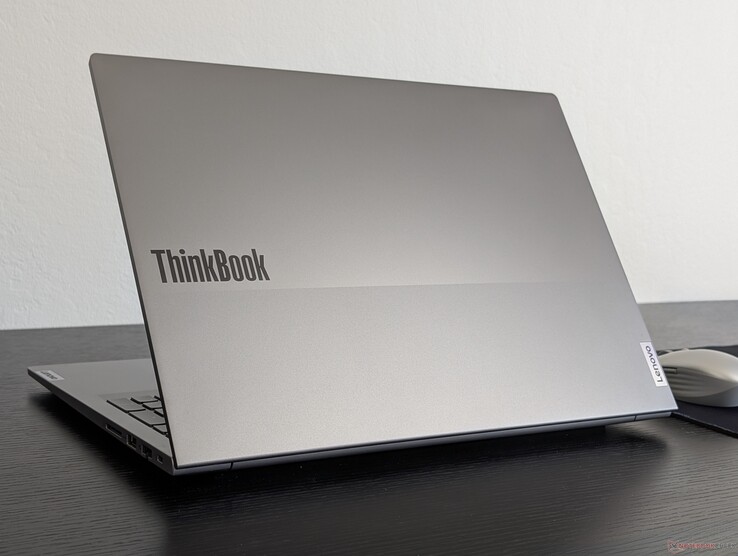
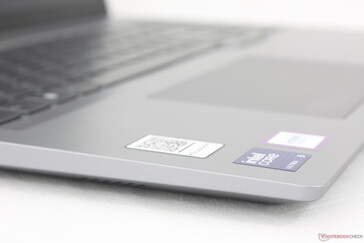

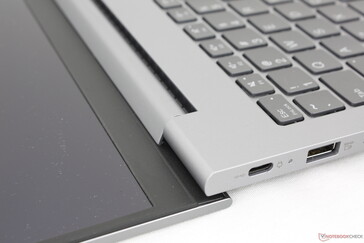
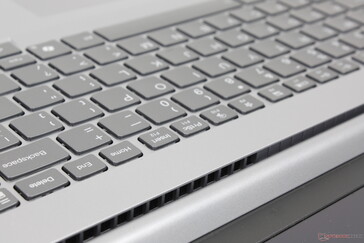
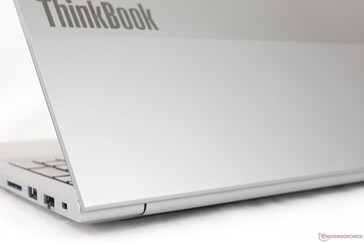
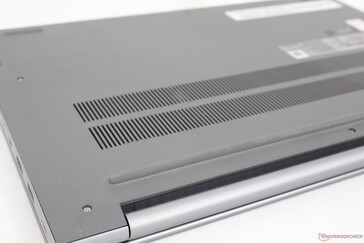




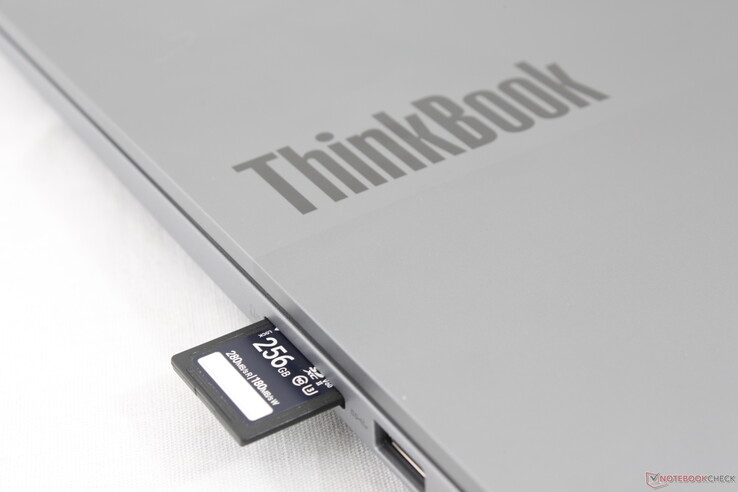

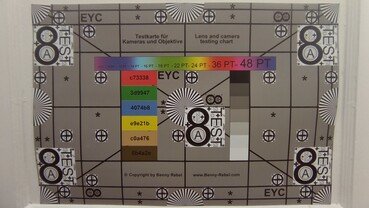


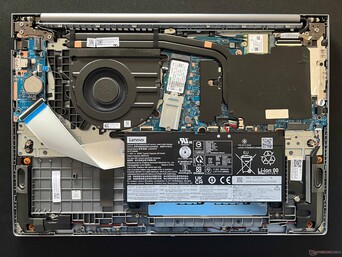
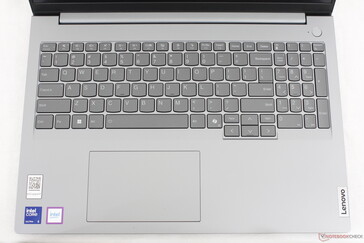
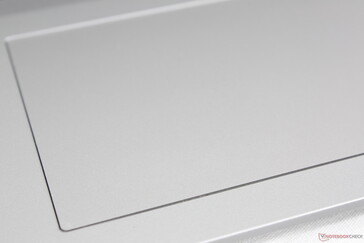


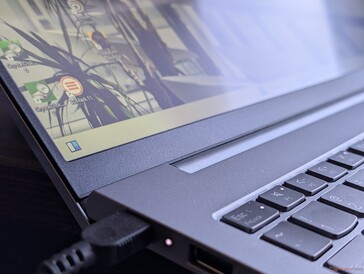

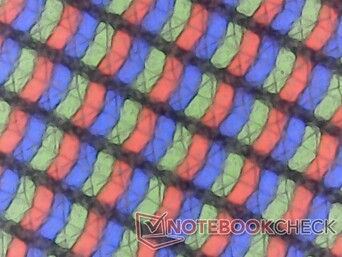
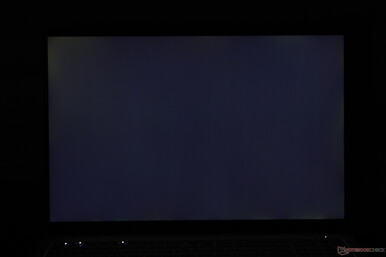
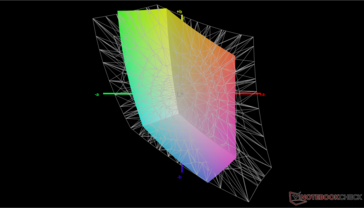
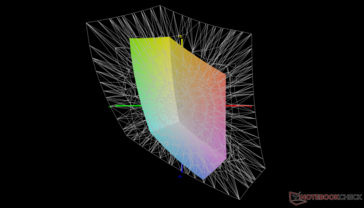
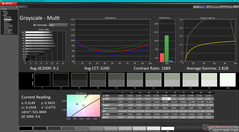
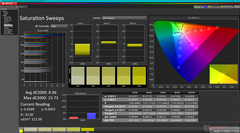
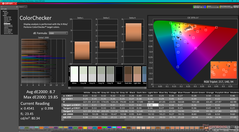
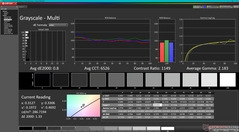
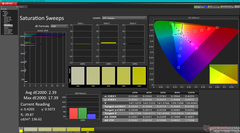
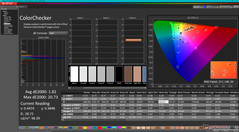

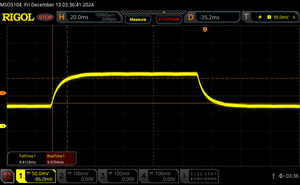


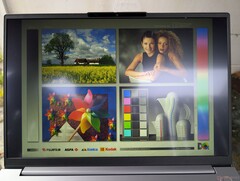
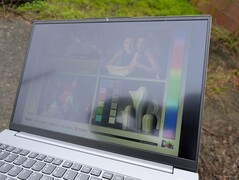

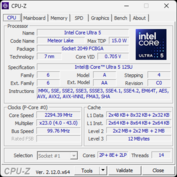
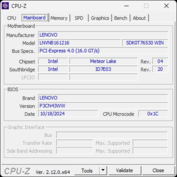

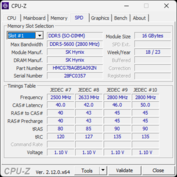
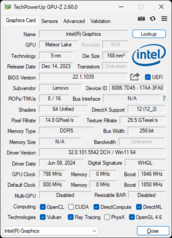
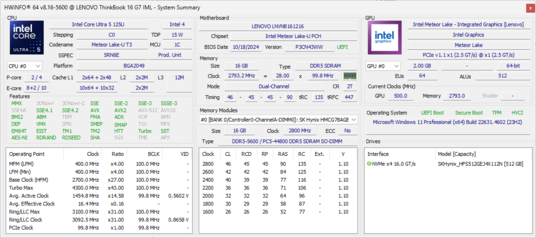

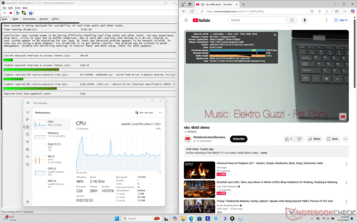
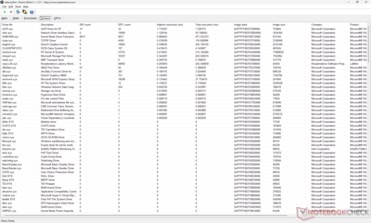
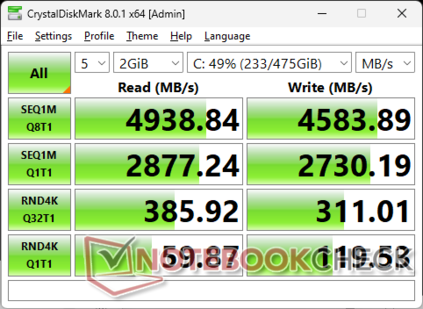

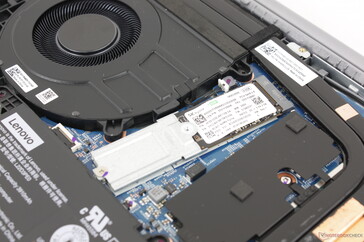
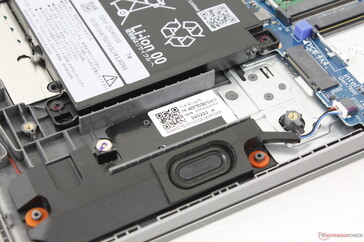

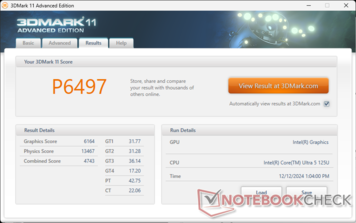
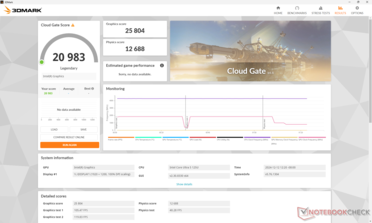
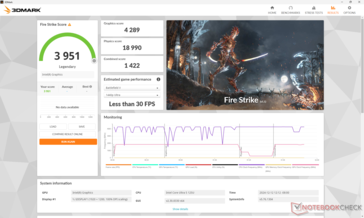
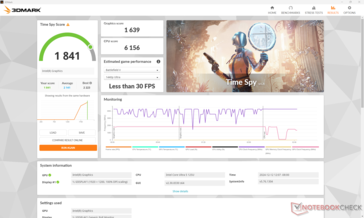
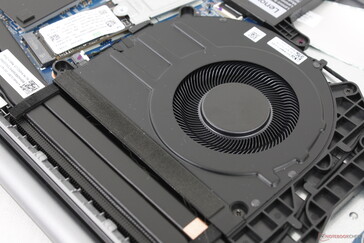
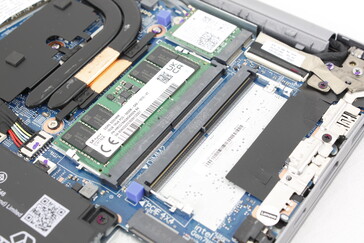

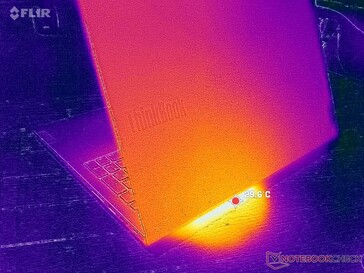

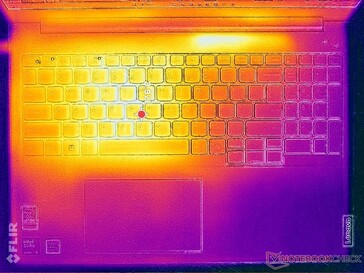
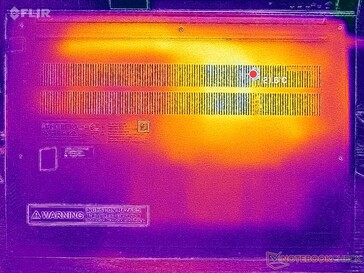
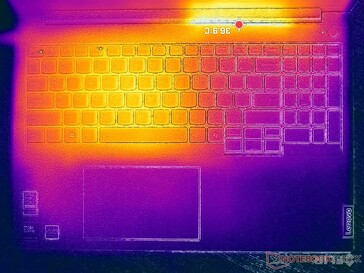


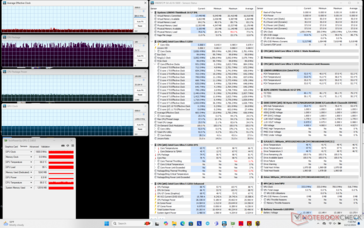
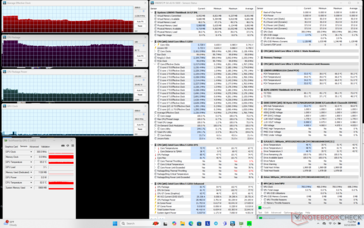
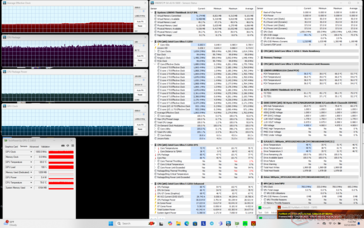

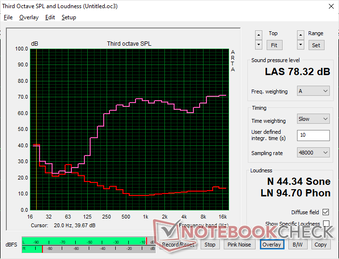
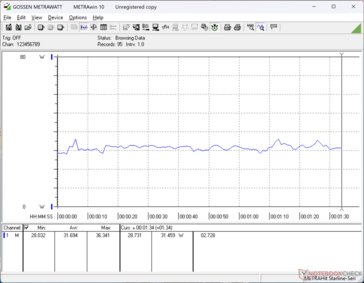
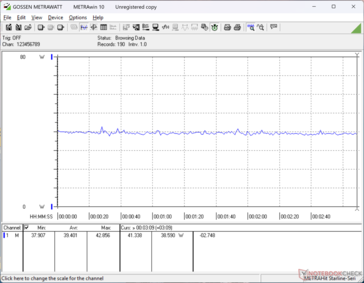
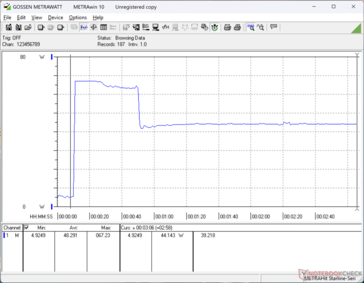

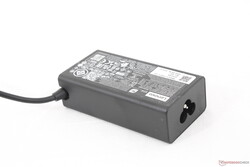
 Total Sustainability Score:
Total Sustainability Score: 